The first thing you need to do when you’re choosing herbs for container gardening is get your hands on some containers … any container will do! As long as you have one that allows for drainage, you can use it to grow herbs.
Most herbs will grow with as little as 4 to 6 hours of filtered sunlight and will thrive on a windowsill that gets full sun. Make sure you turn your herb plants regularly to encourage even growth. They reach for the sun.
It’s also wise to only water when the top of the soil is dry, and then water thoroughly. Many more plants die from over-watering than do from under-watering. Also, water sitting in the drainage pan is not a good thing; always empty it as soon as the water has finished draining.
Herbs for Container Gardening
These 10 herbs are the top choices for container gardens. They will all grow according to the size of container they’re in, so you can grow them as big or as small as you want. Grow enough to freeze or dry, if you wish. Fresh herbs, already potted or cut and tied with a bit of ribbon, also make lovely, thoughtful gifts.
Basil
Use it fresh in salads or pesto, add it to your favorite Italian dishes and try Lime or Opal basil to flavor ice cream. Genovese Basil is closest to the ‘classic’ basil you’re familiar with, while Greek Columnar looks like a small, ornamental, fully branched tree. Basil can be difficult to germinate, so we recommend you start with seedlings.
Chives
You can add chives to anything you would add onions to, but they’re most often used in salads. They will impart a more subtle flavor than onions and will provide a bit of color that yellow and white onions are lacking.

Cilantro
Prized for its pungent, sharp aroma and flavor, Cilantro-Santo is a favorite in Mexican cuisine, and does not produce many seeds. Cilantro seeds germinate easily right in the garden or pot. Harvest the outside leaves first. Cilantro tends to lose strength when dried, so use it fresh or freeze it.

Dill
For container growing, we recommend Fernleaf Dill. It grows to a maximum height of 18 inches. You can use the leaves in salads and vinegars, while its seeds are great for adding flavor to breads, pickles, stews and rice. A dill garnish, complete with yellow blossoms, can make even your simplest meal more attractive. Dill does not grow back once harvested, but it can re-seed if seed heads are left to mature.
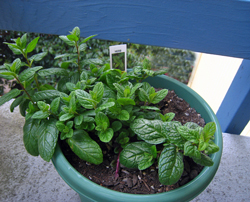
Mint
This prolific grower is the ultimate container herb, even if growing it outdoors. As anyone who has grown mint can tell you, it will take over any pot or garden spot it’s grown in, in relatively short order. Some herbs can share containers; not so with mint. But it can make a prolific and aromatic ground cover for a shady, moist place outside. You have choices, too: Chocolate, Orange, Peppermint and Spearmint are just a few.
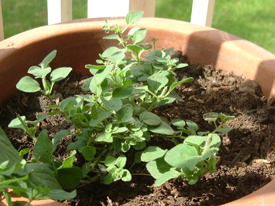
Oregano
For culinary use, we recommend Variegated Oregano, which is a colorful addition to Mediterranean cuisine. It will trail over the sides of its container but will only reach about 12 inches in height.
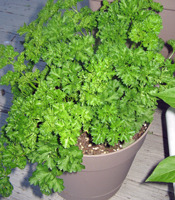
Parsley
Flat leaf Parsley varieties are said to have more intense flavor for cooking, but our Triple Curled Parsley plant is especially comfortable when grown in containers, even if grown indoors. You can combine the two in one planter for a more dramatic and much fuller look. Parsley is at its best when used fresh and it can add color as a garnish to almost every dish. It freshens breath when chewed, too! Parsley seeds start fairly easily.
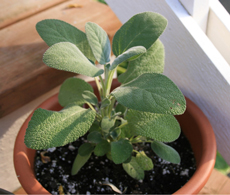
Sage
Most often used with poultry, we suggest you try pairing sage with white beans, apples or green vegetables. Berggarten Sage does not flower and adapts very well to container gardening. Additionally, its thick, textured and uniquely colored leaves add variety to the collection in your herb garden. If you have an exceptionally sunny window or balcony, we highly recommend our Pineapple Sage plant. It smells like fresh-cut pineapple, produces gorgeous red flowers and will even attract hummingbirds. Sage can be started easily from seeds.

Tarragon
This perennial herb doesn’t start well from seeds, so we recommend you start with seedlings. French Tarragon is very adaptable to container growth, with a wonderful licorice-like flavor. Tarragon will grow well in partially shady areas, but do best with midday sunlight.
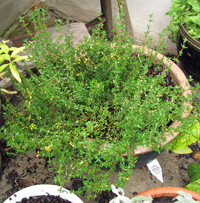
Thyme
You have choices when growing thyme, and we recommend you grow these three: English Thyme, French Thyme and Lemon Thyme. They all have a slightly different flavor, can be trimmed to keep a compact shape and are drought-tolerant. Well-drained soil and lots of sun will produce the best results, even in salty environs. We recommend, however, you purchase seedlings; thyme seeds tend to germinate slowly, if at all.
Now, go container hunting! Then choose your herbs for container gardening, arrange and rearrange them, use your imagination for how to incorporate them into your recipes (for inspiration, check out how to use uncommon herbs) and get planting.
Happy growing!




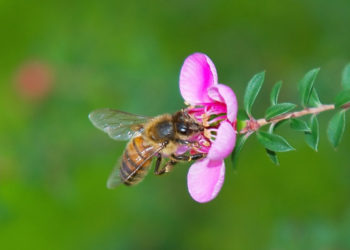
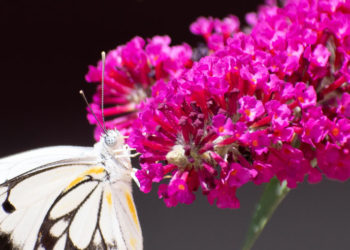

2 Comments
sandy pilcher
October 23, 2017 at 9:31 amWe live in Florida until May 1st, then we go to NC.
Will all plants be shipped together; will they be sent after May 1st;
jstutzman
December 12, 2017 at 6:09 pmSandy, plants going to North Carolina normally ship around April the 9th. However, you can request an earlier or late date to have them arrive when you are there. All the best, Joe